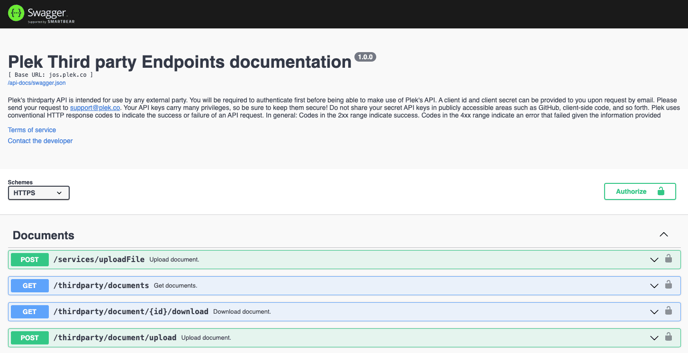The Plek API
Plek has its own API (Application Programming Interface), which allows data to be exchanged between Plek and another tools because the applications communicate with each other.
The RESTful API of Plek makes it possible to send different requests:
GET requests for retrieving data
POST requests for sending data
PATCH requests for modifying data
DELETE requests for deleting data
The extensive capabilities of Plek’s RESTful API can be made visible via Swagger, this is a special tool that automatically compiles the applicable RESTful API document.
As soon as the ‘api-docs’ page is made available, it can be reached by adding /api-docs to the VHost URL (i.e. https://my.plek.co/api-docs). On this page, all possible requests are shown. These requests can also be tried out. Of course, a form of authentication is needed for this. Every request made via an API must send this authentication data. The authentication data consists of a unique API-Key and a unique ID. We call this data the ‘client-ID’ and ‘client-Secret’. These credentials can be set up through the main configuration on the Plek Vhost.
Some examples of data that can be called with the API are:
- User information
- Documents
- Messages
- Group information
- Events
This allows, for example, messages to be posted or deleted automatically at fixed times or events to be scheduled and updated.
Please note that using the Plek API requires some technical knowledge about API's and data modeling. The correct usage of the API and all the data involved will always be the responsibility of the client.

